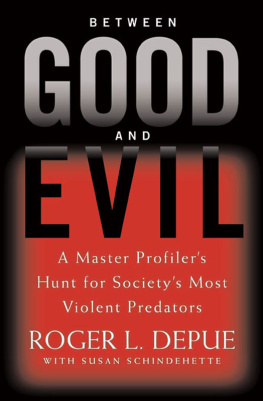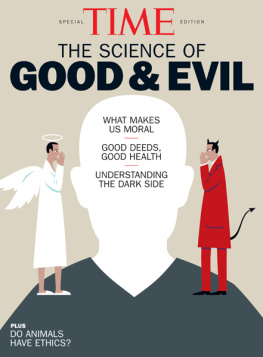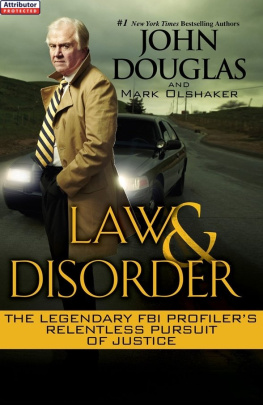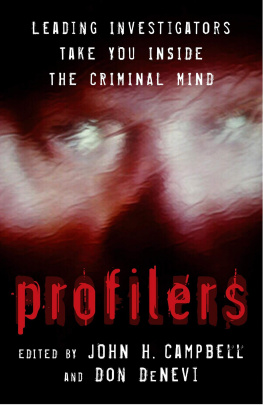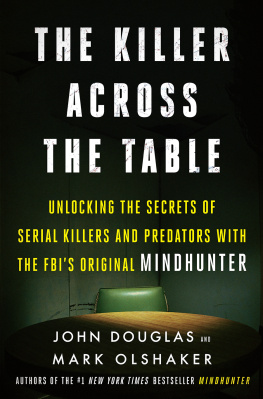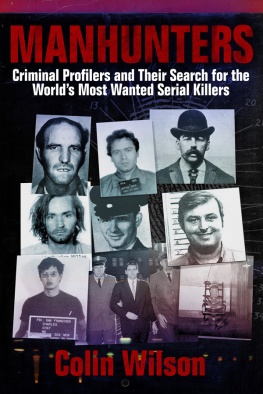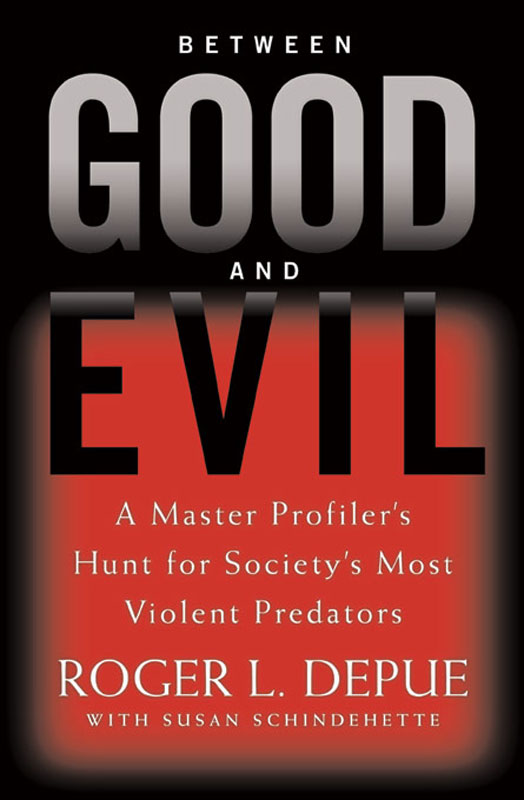Copyright 2005 by Roger L. Depue and Susan Schindehette
All rights reserved.
Warner Books
Hachette Book Group USA
237 Park Avenue, New York, NY 10017
Visit our Web site at www.twbookmark.com.
ISBN: 978-0-7595-1327-3
First eBook Edition: February 2005
DEDICATION
To my wife, Joanne, who put the smile back on my face.
TESTAMENT
SHE WAS SOMEONES DAUGHTER , fifteen years old, found lying on a mound of earth just off a desolate country road, with frosted pink polish on her fingernails and a gaping wound where her throat had been cut. As I surveyed the scene, surrounded in stillness, I studied the details of this tableaulittle girls hands, clothing missing below the waist, bruises circling the fragile neck. But beyond the obvious evidence of violence, there was something jarring about the way the killer had left her here.
She was on her back, arms straight down at her sides. Yet after a brutal sexual assault, her legs were together now at knees and ankles, drawn up and tipped, almost demurely, to one side. Her killer had left her in a position of peaceful repose. Gently, it seemed. Tenderly. As if she were a sleeping child.
For ten years beginning in 1979, I was chief of the FBIs Behavioral Science Unit, at a time when its pioneering work in the field of criminal profiling first came to prominence, thanks in part to author Thomas Harris, who picked the brains of our profilers in conjuring up the character of Dr. Hannibal Lecter for his novel The Silence of the Lambs.
Today, in a related incarnation, I am the founder of The Academy Group, an elite international crime consulting firm whose half dozen members, all FBI, CIA, or Secret Service veterans, constitute a brain trust of the worlds top forensic behavioral science experts in their respective fields: from sexual homicide and child predation, to international terrorism and espionage.
In that role I have listened to tapes of the Columbine school shootings, studied the rage wounds inflicted with a golf club on Martha Moxleys skull, analyzed the JonBenet Ramsey ransom note, and helped a colleague plan his approach in debriefing the notorious FBI agent-turned-traitor Robert Hanssen. I am summoned to cases when all other investigations have failed, when law firms, police jurisdictions, or the emotionally devastated families of victims have nowhere else to turn. It is work that calls on me to be an advocate, a father confessor, and, sometimes, even a bit of the diviner.
In the course of my career I have seen horrible thingscruelty and human depravity in every imaginable permutation. In the 1980s I supervised agents investigating a series of bizarre homicides in California, in which the killer not only eviscerated his victims, but lingered at the scene while blood pooled in their abdominal cavities. Only after carefully studying the crime scene did we recognize the special proclivity of twenty-seven-year-old Richard Trenton Chase, whom the press later christened the Vampire Killer. It was revealed in the odd ring marks found on the floor next to victims, the kind that might be left by someone drinking from a blood-filled plastic yogurt cup.
A decade later, reviewing the murder of a housebound elderly woman, I noted the tremendous amounts of bloodsprays of darkening crimson on the walls, ceiling, and floors in the room where she was killed. But I was also struck by something that had not been given much significance by local policethe fact there was no blood at all on any of the rooms baseboards. The killer, I realized, must have wiped them down afterward.
Even after forensic lab tests confirmed that scenario, there was still no obvious message, of the kind left as a taunt by the seasoned serial killer at a crime scene. This was evidence of a disordered perpetrator clinging to the control afforded by familiar routine. Of someone, I thought, who might recently have left a psychiatric facility. Ultimately, investigation did indeed bear out that theorythe perpetrator was a young man just released from a California state mental hospital, whose job had been cleaning the baseboards on his ward.
Now, at a rural crime scene near a farmers field, I was trying to solve the brutal murder of an innocent fifteen-year-old girl. And I began to try to decipher what our killer had written with his savagery.
Bloodstains pointed to the precise location of the murder, a dense wood thick with stands of evergreen and maple, fifty feet from the side of the road. But the killer had chosen not to leave his victim there, and I knew what that meant. Any subject with normal human responseone who had, say, raped this young girl and then, in a panic, killed herwould have done all he could to hide his crime and avoid detection. He would have left her in the woods, perhaps in a shallow grave, or at least made some effort to hide her corpse in the brush. But this killer followed a different imperative. He had deposited his victim where he was certain she would be found.
Why would he do such a thing? Was he a braggart, a provocateur? I didnt think so. I have seen sexual predators make unspeakable displays of their victims, violating them with gun barrels and broom handles in what hardened investigators refer to as stick jobs. But this killer had shown no such contempt. It seemed to me that there was only one plausible explanation: He had moved his victim because he did not want to leave her in the woods, unseen, where she might be vulnerable to insects or animals. He wanted whoever found her to appreciate heras he hadwith her freshness and beauty still intact.
Even so, he might have dragged her by the hair, or simply dumped her body. Instead, he had gone to the trouble of laying her carefully on a raised berm, higher than the surrounding ground. And then I began to understand. This killer did what human beings have done with objects of veneration since time immemorial. He had placed his victim on an altar.
Quickly, the pieces began to fit. After he had brutalized her, he felt remorse, very nearly a tenderness toward her. He treated her gently after he killed her, and I knew now exactly how he had transported her to this resting place. He had carried her from the spot where he had killed her the way a parent would a sleeping childslipping one hand beneath her back, and the other under her knees. Then, when he laid her down softly on the ground, as if not to wake her, her knees had rolled gently to one side. What did this mean?
It meant that he knew her. Finally, it was clear to me. Whoever killed this young girl had also, in his own evil way, loved her.
How can those two thingslove and hateexist together in a person? In the same way, I believe, that good and evil exist in the world. In a constant state of tension, fighting each other for dominance. I know something about that struggle. I believe that I have a deeper understanding of these things than most people do.
My work has given me a profound respect for what humans suffer at the hands of evil, and a particular sensitivity for what its victims endure. During every investigation that I participate in, there is always an invisible observer at my shoulder, whose presence I never forget. Regardless of the circumstances of a case, I am always giving voice to its silent victim.
What must this young girls final minutes have been like? Did she cry out while he was repeatedly stabbing her, or keep silent, breathing like a wounded animal, watching for the next glint of a blade? Did her thoughts turn to her parents in those final seconds, when she was overwhelmed by the deepest loneliness she had ever known? Did she experience a dissociative response, the sense of drifting upward and watching her own death as if from above? Or did she sink mercifully into unconsciousness, and feel nothing as her life ebbed away?

